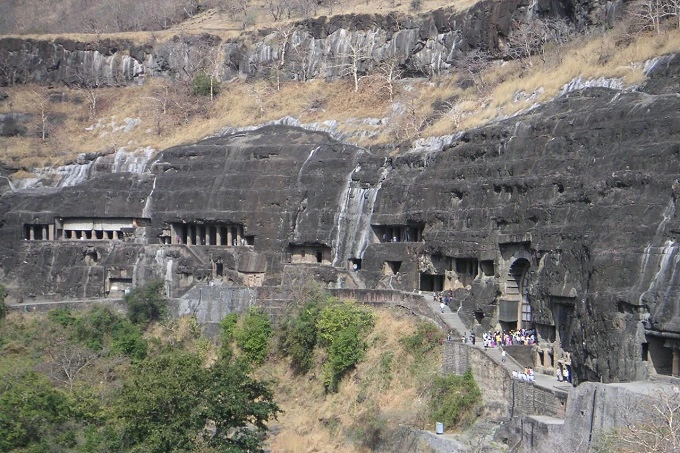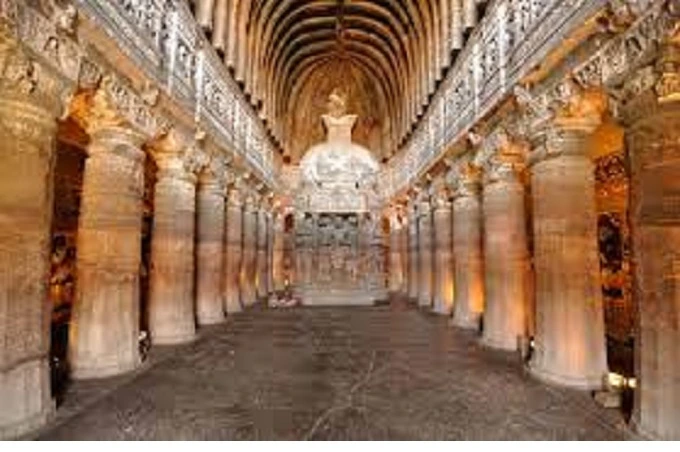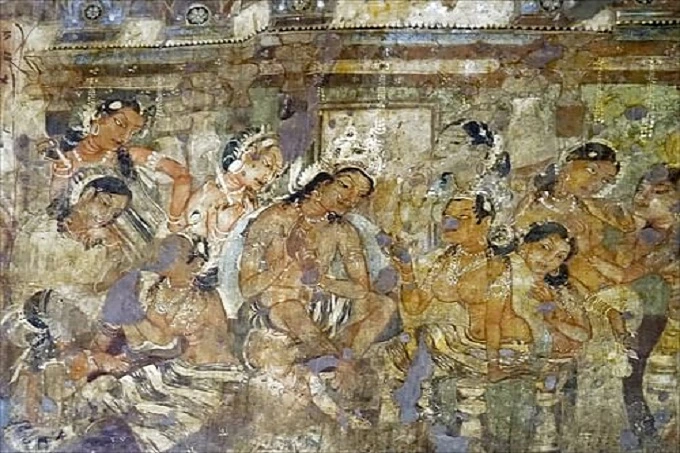What secrets do the Buddhist caves of Ajanta keep: a temple abandoned for 1500 years in India

It happened in 1819: a British officer named Captain John Smith was hunting tigers (of course, in colonial India) when he suddenly discovered the entrance to a cave. This entrance was not like any other; instead, it was made by human hands and took the form of a high arch leading into a large hall with pillars. Caves in the Ajanta region of Maharashtra had been abandoned for the better part of 1,500 years, and this particular one was the tenth of the thirty caves in that region. The first thing that Smith did was scratch his name and the date of the discovery into the surface of one of the ancient murals.
Buddhist temples lost in the jungle

Since the previous century, the caves’ general status has worsened greatly. This is due to their illiterate restoration, the excessive attention of visitors, and other reasons, some of which are not always tied to humans. Other elements that have harmed the caves include: Because of this, the drawings and paintings created “by hot steps” or by painters who imitated historical frescoes are now considered very high worth. Because the three dozen rooms carved into the rock were discovered to be filled with many works of ancient Indian beautiful art.
The caves are situated on a horseshoe-shaped rock that is located high above the river. The cave entrances face the coast, and some ladders lead down to the river below. It is believed that construction on the structure began as early as the second century B.C. when builders carved different rooms out of the basalt rock. This was not a city like Petra in Jordan; instead, the caves were devoted to the cult of the Buddha, and Buddhist monks lived in them and practised their religion there.
The construction of this temple-monastery complex is believed to have taken place in two stages: the first stage came to an end before the start of the current era, and the second stage took place between the fifth and sixth centuries. There are disagreements regarding the history of each cave, but the most widely held belief is that the complex was built in two stages. After then, the caves were deserted because of the political climate in this region of India, in addition to the declining popularity of Buddhism among the local population. As a result, the construction work in some caves was never finished. Even with the ravages of time, what has been accomplished is incredible.
The interior design of the caves

It was chosen to number the caves from one to thirty, going in the opposite direction from east to west. They range in size and surface area, with the fourth being the largest at approximately 970 square meters and the sixth, for example, being a two-story structure. It was necessary for builders in the past to make adjustments to actual conditions, such as the fact that the rock was not uniform everywhere, there was a risk of collapse, and on occasion, it was necessary to repair damaged sections of the caves. Adapting to actual conditions required builders in the past. In any event, the architects of that era did not have to worry about acquiring the material for the walls, ceiling, and floor and bringing it to the construction site. As a result, they were able to concentrate on the interior décor of the building.
The caves are painted with many murals depicting the life of the Buddha and his early incarnations, as well as the social life of India during those early times. The premises contain several one-of-a-kind sculptures that the most skilled artisans have crafted. The work was paid for by the public treasury and private consumers, many of whom were women. Historians who examined the murals, which are one-of-a-kind images, came to this conclusion as a result of their research. These frescoes have become something of an encyclopedia of India’s Buddhist history.
Not only may you observe depictions in the frescoes that directly pertain to the Buddha and his previous lives, but you can also see other things. Several depictions of social life are depicted on the caverns’ walls. These illustrations show trading stores and schools as well as palaces, foreign merchants, and scenes from the life of the Indians. In the nineteenth century, British people had the opportunity to see things such as clothing and hairstyles from more than a thousand years ago. Artists replicated frescoes from Ajanta, and the resulting works eventually found their way into European museums or the private collections of art and cultural experts from Asia.

What does the cave complex hold, and how to preserve it
It is believed that the oldest rooms were painted as early as the second stage of work on the temple complex. Still, even this period seems to be very long for the preservation of images – especially when considering India’s climate, which is characterized by intense heat and heavy downpours. The images found inside the caves were distinguished by the fact that their colours had not faded over the centuries. Even after one thousand and fifty years, the designs have not lost their clarity, and the colours have not lost their brilliant and radiant quality. However, the frescoes have not been maintained in such a state in all of the caves that have been explored.
In the days when the caves were not used as a landmark but had their cultic purpose, Buddhist monks had their cells there, travellers and merchants sought rest and sanctuary here, and meditations and prayers were held inside these dark spaces. Even though there is a relatively small population of Buddhists in India (today, fewer than one percent of the country’s population considers themselves to be followers of this faith), the caves are now used for meditation
After the seventh century, the caves were left in a state of decay and eventually gave in to the authority of the surrounding jungle. Despite this, their existence was known to locals, and travellers observed them as well: one of these travellers wrote in his notes that there were four etched in the rock of the temple during the seventeenth century. John Smith Residents of a neighbouring hamlet helped clear the way inside the tunnels by hacking down the thick jungle vegetation that had grown over them. In addition, the caves have been recognized by UNESCO as a World Heritage Site for the past four decades.
The current attention that is being paid to this cultural monument, unfortunately, is unable to restore the damage that the Ajanta caves caused by the old interest of visitors, as well as vandals: not only time and the elements have had a negative impact on the condition of these structures and the art objects that are contained within them. Since the structure has been converted into a museum, various replicas of the caves are available for tourists to explore. These replicas feature sculptural and graphic works that are duplicates of the originals.




